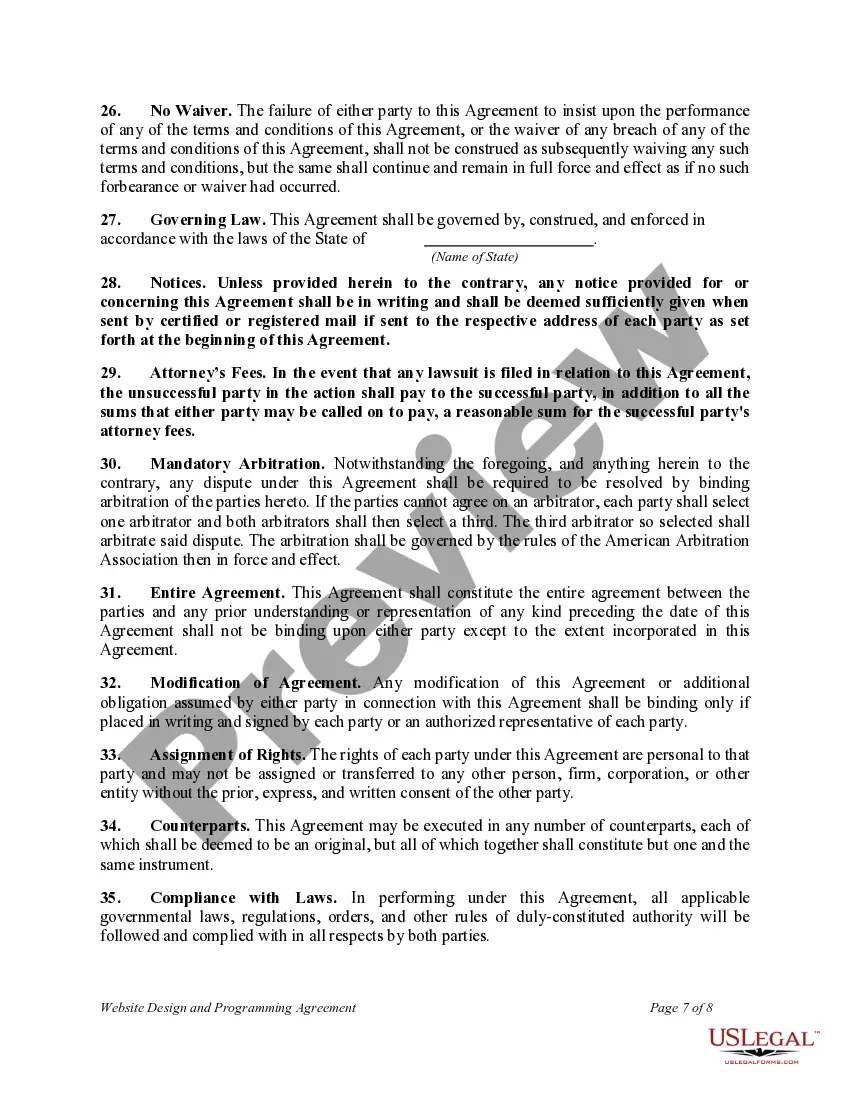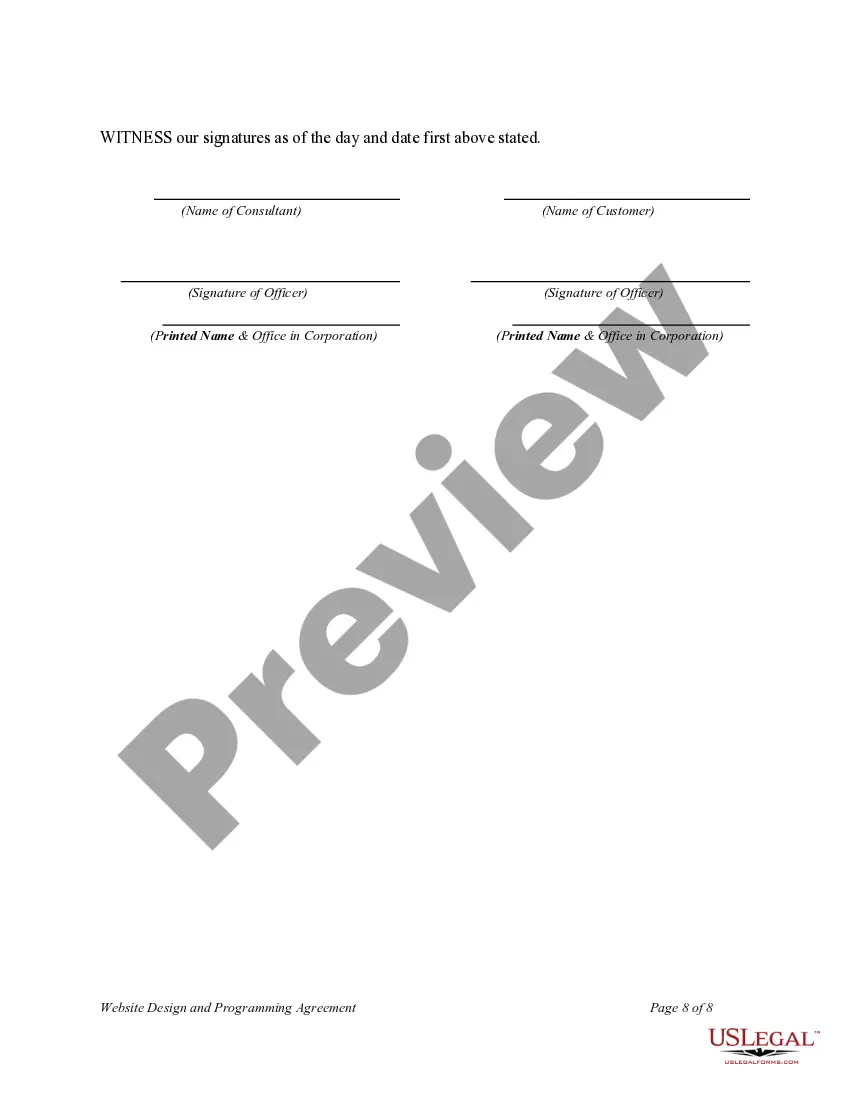Louisiana Website Design and Programming Agreement
Description
How to fill out Website Design And Programming Agreement?
If you require extensive, acquire, or create legal document templates, utilize US Legal Forms, the largest assortment of legal templates, accessible online.
Take advantage of the site’s straightforward and convenient search to find the documents you need.
Various templates for business and personal purposes are organized by categories and states, or keywords.
Every legal document template you purchase is yours forever. You can access all forms you saved in your account. Click the My documents section and select a form to print or download again.
Stay competitive and acquire, and print the Louisiana Website Design and Programming Agreement with US Legal Forms. There are numerous professional and state-specific templates available for your business or personal needs.
- Employ US Legal Forms to locate the Louisiana Website Design and Programming Agreement with just a few clicks.
- If you are already a US Legal Forms user, Log In to your account and click the Obtain button to access the Louisiana Website Design and Programming Agreement.
- You may also retrieve templates you previously saved in the My documents section of your account.
- If this is your first time using US Legal Forms, follow the steps below.
- Step 1. Make sure you have selected the form for the correct city/state.
- Step 2. Use the Review option to evaluate the form’s content. Don’t forget to read the details.
- Step 3. If you are not satisfied with the form, use the Search area at the top of the screen to find other versions in the legal document template.
- Step 4. After finding the form you need, click the Buy now button. Choose the pricing plan you prefer and enter your credentials to create an account.
- Step 5. Complete the payment process. You can use your credit card or PayPal account to finalize the transaction.
- Step 6. Select the format of the legal document and download it to your device.
- Step 7. Fill out, modify, and print or sign the Louisiana Website Design and Programming Agreement.
Form popularity
FAQ
What to Include in Your Web Design ContractHave a Clearly Defined Statement of Work.Streamline the Review and Approval Process.Protect Yourself in the Case of Project Termination.Protect Yourself Against Copyright Infringement.Make Sure the Agreement Designates a Legal Jurisdiction Near You.More items...?
Successfully Negotiating With Web Design ClientsKnow Your Worth.Know Your Market.Know Your Client.Know the Difference Between Value and Price.Learn How to Say No.Always Use a Written Contract.Never Ignore the Upsell.Don't Offer Freebies.More items...
Launch Word. If Word is already open, click the File tab and select New. Type contract in the Search For Online Templates field. Scroll through the results to find a template that suits your needs or click on any of the categories in the left menu to filter your search results.
A web design contract is a legally binding agreement between a client and designer. It contains pricing, scope of the design work, timeline of deliverables (like wireframes or final design elements), payment schedule, intellectual property rights, and other legal terms.
If you're wondering what service you can offer, here are 20 service-based home business opportunities to consider:Graphic designer.Web designer.Developer.Transcriber.Translator.Marketing writer.Resume writer.Photo or video editor.More items...?24-Oct-2021
What You Should Include in Your Freelance Design Contract TemplateDetailed descriptions of the work you'll be doing.Timeline for deliverables (including dates to aim for so you can create a work-back schedule)Payment details (overall cost, down payment, method of payment, due dates for payments, including late fees)More items...?
A web design contract is a legally binding agreement between a client and designer. It contains pricing, scope of the design work, timeline of deliverables (like wireframes or final design elements), payment schedule, intellectual property rights, and other legal terms.
How to Start Your Online Business In 10 Steps.Determine Your Niche and Business Idea.Conduct Product Research.Learn About Online Business Laws.Conduct Market Research.Define Your Target Audience.Source Products to Sell Online.Evaluate Product Viability.More items...
How to start a web design businessSet up your work environment.Build your support squad.Decide on your products, services and pricing model.Name your web design company.Write your business plan.Address legal and administrative requirements.Create your proposals and contract templates.More items...?
A Website Development Agreement is a contract between a company/business and the web developer. The agreement lists the responsibilities and tasks of the web developer, the liability of the company, terms and conditions, website warranties and representations, and the assignment of duties.






















